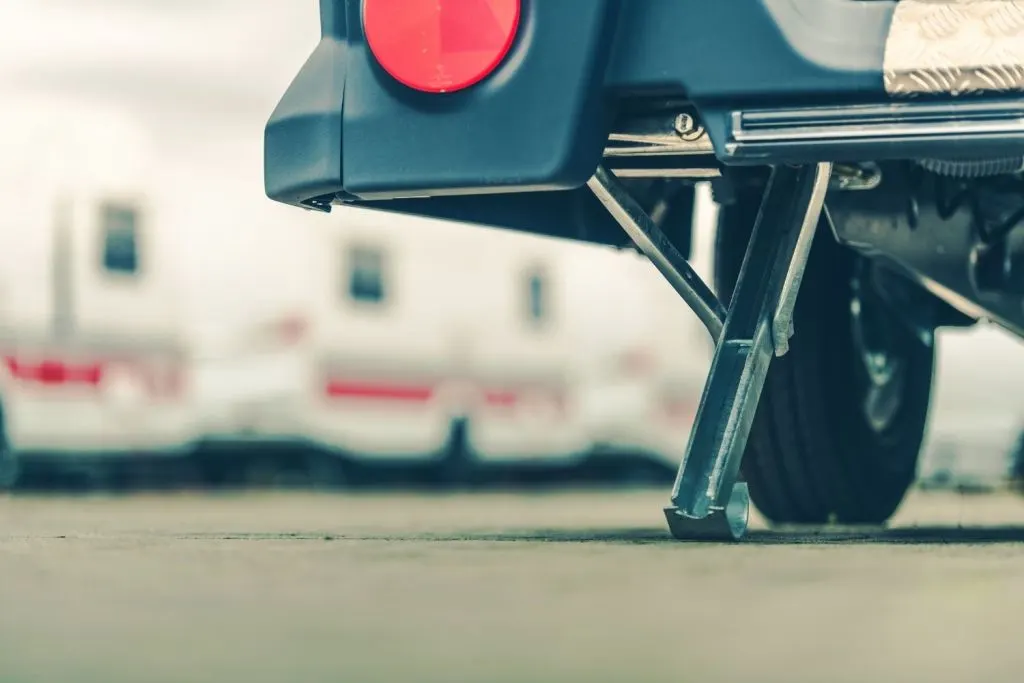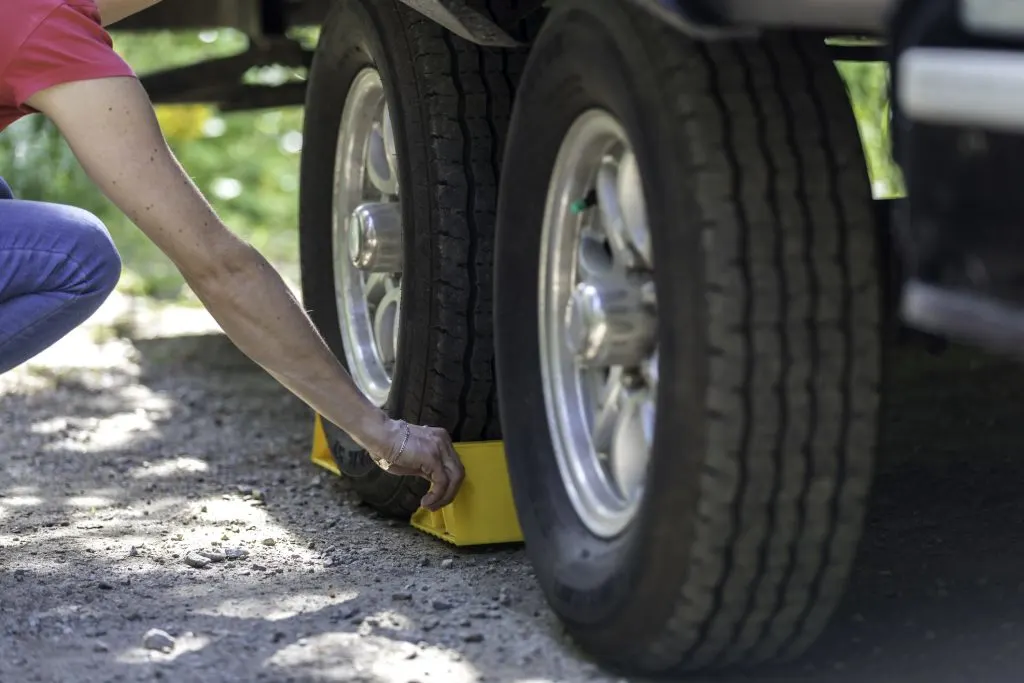Making an effort to stabilize your RV is critical for your comfort. It can mean all the difference between a relaxing day and feeling seasick.
But it can also prevent damage to your motorhome and keep your appliances functioning. So if you’re having trouble getting it done, we can help.
Today we’ll review the importance of this practice and cover some tips to do it right.
Let’s hit the road!

Why You Need to Stabilize Your RV
When you park your camper, you need to do more than level it. That’s because it’s just sitting on its suspension and axles. The flexible frame protects your motorhome when it’s on the road.
Stabilizing an RV helps prevent the vehicle from swaying while parked. This can be caused by wind, passing cars, or simply walking around. The rocking motion can be uncomfortable for those inside and damage your frame.
It’ll also help you keep your rig even. You need a steady surface to ensure all appliances and systems inside, such as the refrigerator and toilet, function properly. It also helps to prevent damage, as an unlevel camper can cause stress on the frame and other components.
Stability is vital if you want a steady ground to walk on. But there are several reasons you might have trouble doing it.
What Is the First Step to Stabilizing Your RV?
If you want to stabilize your RV, the first thing you need to do is level it. These are two distinct processes, but you need to do both properly. This’ll help your doors open and shut and ensure your appliances can work properly.
It’ll also make it easier to walk about your camper and go about your regular routine. When your trailer isn’t even, none of the surfaces inside will be either. Even the most straightforward cooking task will be a lot harder.
First, find a nice, flat place to park. This isn’t as simple as it sounds because a small obstruction can create a wonky camper. Avoid loose sand, tire ruts, and tree roots. Once you’re settled, you should turn on your parking brake to help it stay put.
Some campers have automatic jacks. These are worthwhile investments that can simplify the task tremendously. Otherwise, you’ll need blocks or manual jacks to even out the low sides.
Your RV Tires and Suspension Need to be Stabilized
After parking on level ground, blocking your tires is the next focus point. Most use simple wheel chocks to get this done. They’re cheap, easy to use, and crucial for stopping back-and-forth motion. You’ll need at least four, and you should place them outside each wheel before you unhitch your trailer.
It’s also important to periodically check your air pressure and ensure your tread depth is good. Well-maintained tires will make it much simpler to even things out.
For some heavier vehicles, this won’t be enough to keep you steady. X chocks are an excellent upgrade to consider. Designed to fit between the wheels and expand, they create a secure grip that helps to prevent any movement.
These advanced wedges work by applying pressure to both tires, which helps to stabilize the suspension system. They can be beneficial when parking on uneven or sloping ground.
However, they’re only one part of the formula, so don’t depend on them alone to secure your rig.
Price Check: X Chock Wheel Stabilizers

You Need More Ground Contact to Stabilize Your RV
Once your trailer is unhitched, your wheels are the only point of contact with the ground. Stabilizer jacks used under the four corners of your RV help distribute the weight with more ground contact.
X-braces go between the frame and the suspension of your rig. They help distribute weight and reduce any side-to-side movement. Install one under the door and one on the opposite side.
Kingpins, on the other hand, are like a tripod for the fifth wheel hitch of your trailer. They offer additional support and are easily adjustable. You can also find accessories to steady your slide-outs or to provide more stability.
Pro Tip: Stabilize your RV wheels with these Best RV Wheel Chocks.
Your RV Steps Are Not Stabilized
Once your RV is stabilized, you still have one risky area worth addressing. The steps that help you get in and out of your trailer are attached directly to the frame. While that may be fine for the first stair, things can get wobbly closer to the bottom.
There are several options to help you steady your exit. One of them is to invest in higher-quality materials for your stairs. Some models can hold more weight and have adjustable feet to level them on rough terrain.
You can also find special jacks just for your stairs. Having a steady place to put your feet is crucial, especially if you have bad knees or poor balance. It can make all the difference between a smooth exit and a nasty spill.
Find out why we think every RVer needs an RV jack pad.
It’s Worth The Effort to Stabilize
When you spend time properly stabilizing your RV, you’re making a safer, more comfortable home. You’re also protecting your investment from severe damage. And finding a level spot to park is only the first step.
While it may never be as solid a foundation as concrete, your camper doesn’t have to rock like a houseboat. Experiment with different accessories until you find the best setup, and enjoy your stable home.
Discover the Best Free Camping Across the USA
To be honest with you, we hate paying for camping. There are so many free campsites in America (with complete privacy).
You should give it a try!
As a matter of fact, these free campsites are yours. Every time you pay federal taxes, you’re contributing to these lands.
Become a FREE CAMPING INSIDER and join the 100,000 campers who love to score the best site!
We’ll send you the 50 Best Free Campsites in the USA (one per state). Access the list by submitting your email below: